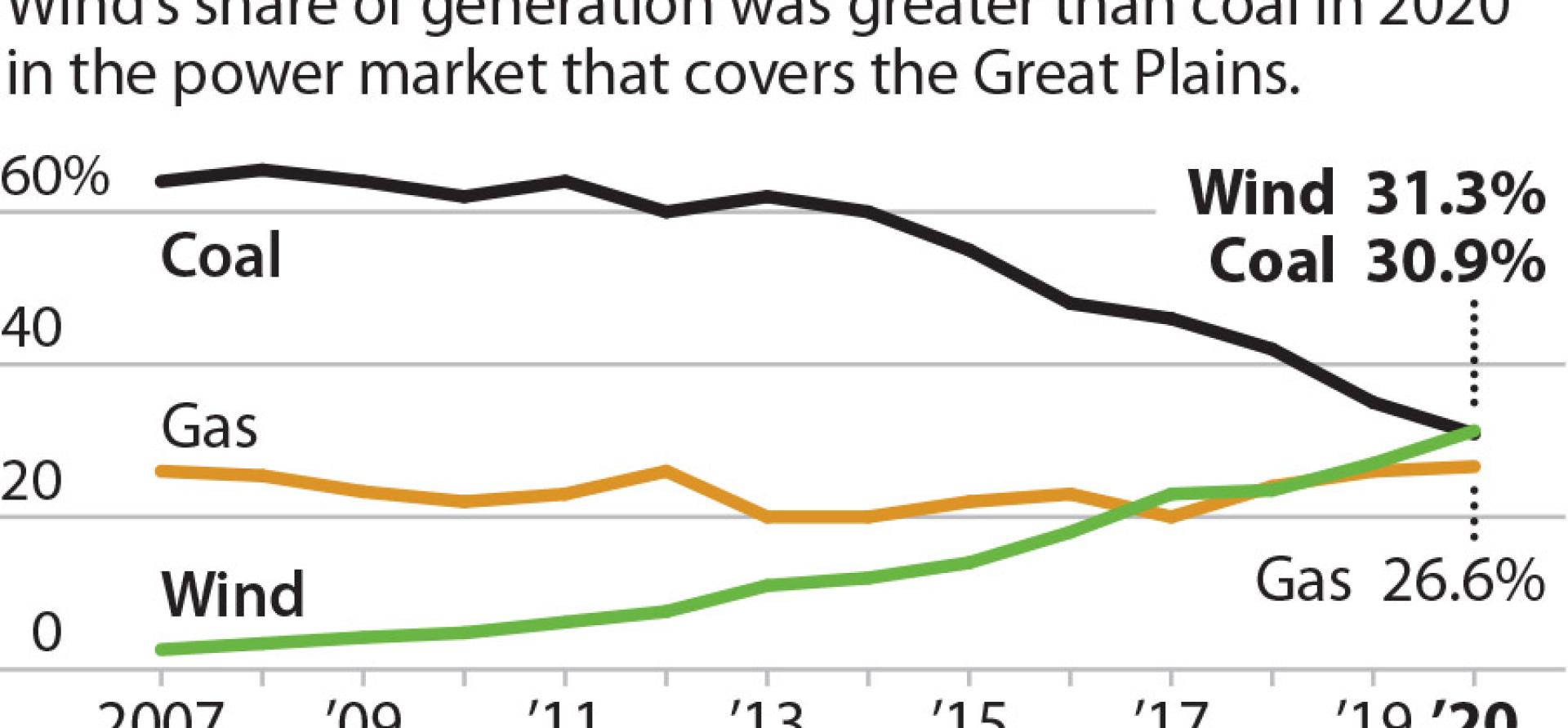IEEFA U.S.: Wind surpassed coal as No. 1 fuel source in 2020 for Southwest Power Pool

February 11, 2021 (IEEFA) — Wind surpassed coal as the primary power generation source last year for the Southwest Power Pool (SPP), an independent grid operator that provides electricity for a vast territory stretching from the Texas Panhandle to the Canadian border.
 An analysis by the Institute for Energy Economics and Financial Analysis (IEEFA) found the growth has been driven by the near tripling of wind resources over a five-year period and improved wind turbine designs.
An analysis by the Institute for Energy Economics and Financial Analysis (IEEFA) found the growth has been driven by the near tripling of wind resources over a five-year period and improved wind turbine designs.
“There are several reasons why this isn’t surprising,” said David Schlissel, IEEFA director of resource planning analysis and author of the report. “Wind should continue to be the No. 1 fuel source in future years.”
Since 2008, wind generation of electricity has exploded from fewer than 10,000 gigawatt-hours (GWh) in 2008 to more than 70,000 GWh, according to SPP. Besides having a natural advantage of serving utilities located primarily in the Great Plains, an area of high potential for wind, the costs of adding new wind capacity fell by 45 percent between 2010 and 2019. Turbine design improvements, such as larger rotor diameters and higher hub heights, have provided better performance as well. Finally, the amount of dispatchable wind capacity—a source of power that can be turned on and off—soared from 27 percent of capacity in 2014 to more than 75 percent in 2019.
The increased wind generation has come largely at the expense of coal. In 2007, wind held a 2.6 percent market share. It’s now 31.3 percent. During the same period, coal’s share of the market fell from 64 percent to 30.9 percent. The decline has occurred even as the volume of self-committed megawatts (the ability of producers to decide that the power from their specific generator(s) should be dispatched into the grid) at coal plants has outpaced the next-largest fuel source by a 4-to-1 margin.
A combination of significant additions of renewable resources and low natural gas prices is expected to continue to cut into coal’s dwindling market share. SPP has announced plans to add almost 90 gigawatts (GW) of renewables in the near future. Almost 90 percent of SPP’s coal plants have been in service for more than 30 years, which means they’re likely to be less efficient because they burn coal at higher heat rates and are more likely to be replaced by cleaner, cheaper renewables.
Full report: Bad News for Coal in the Southwest Power Pool
Author contact
David Schlissel ([email protected]) is IEEFA’s director of resource planning analysis.
Media contact
Vivienne Heston ([email protected]) +1 (914) 439-8921.
About IEEFA
The Institute for Energy Economics and Financial Analysis (IEEFA) examines issues related to energy markets, trends and policies. The Institute’s mission is to accelerate the transition to a diverse, sustainable and profitable energy economy.















